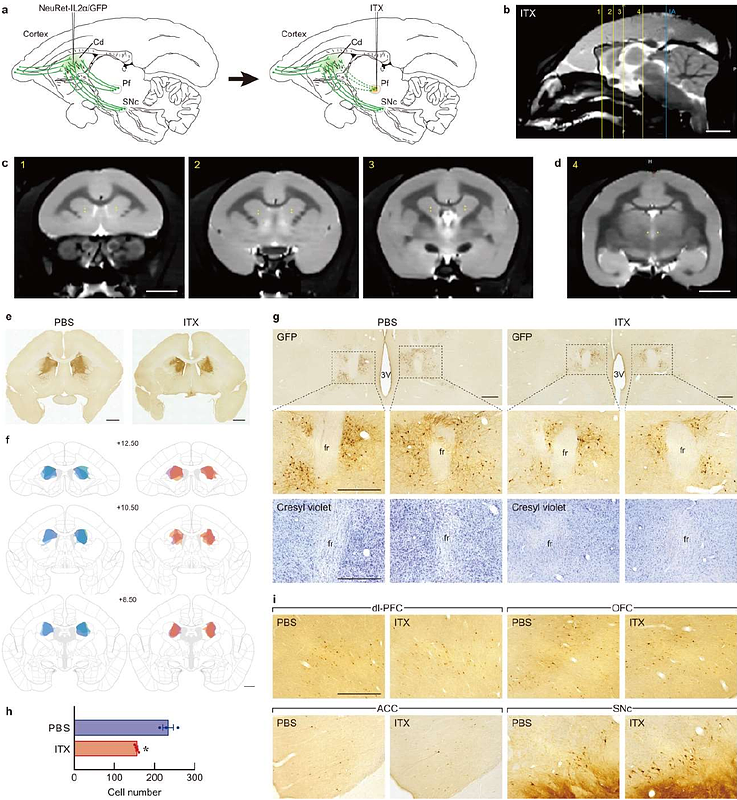Distinct roles of two thalamostriatal systems in learning processes of visual discrimination in common marmosets

Distinct roles of two thalamostriatal systems in learning processes of visual discrimination in common marmosets
Kato, S.; Sugawara, M.; Yamasaki, M.; Watanabe, M.; Inoue, K.-i.; Nakamura, K.; Koketsu, D.; Chiken, S.; Nambu, A.; Takada, M.; Kobayashi, K.
AbstractThe thalamostriatal projections arising from the intralaminar thalamic nuclei (ILN) constitute the principal source of input information to specified subregions of the striatum, a key structure of the cortico-basal ganglia circuitry. However, the roles of primate ILN in cortico-basal ganglia circuit functions remain unclear. Here, we performed immunotoxin-induced selective targeting of two representative structures of the ILN, the parafascicular nucleus (Pf) and centre median nucleus (CM) projecting to the caudate nucleus (Cd) and putamen (Pu), respectively, in common marmosets. Elimination of Pf-Cd neurons resulted in impaired reversal learning of a two-choice visual discrimination task, whereas removal of CM-Pu neurons disturbed the task acquisition. No marked impact of such manipulations was observed on either motor skill learning or spontaneous locomotor activity. Our findings reveal that the two thalamostriatal systems play distinct roles in the learning processes of external cue-dependent decision-making in nonhuman primates.